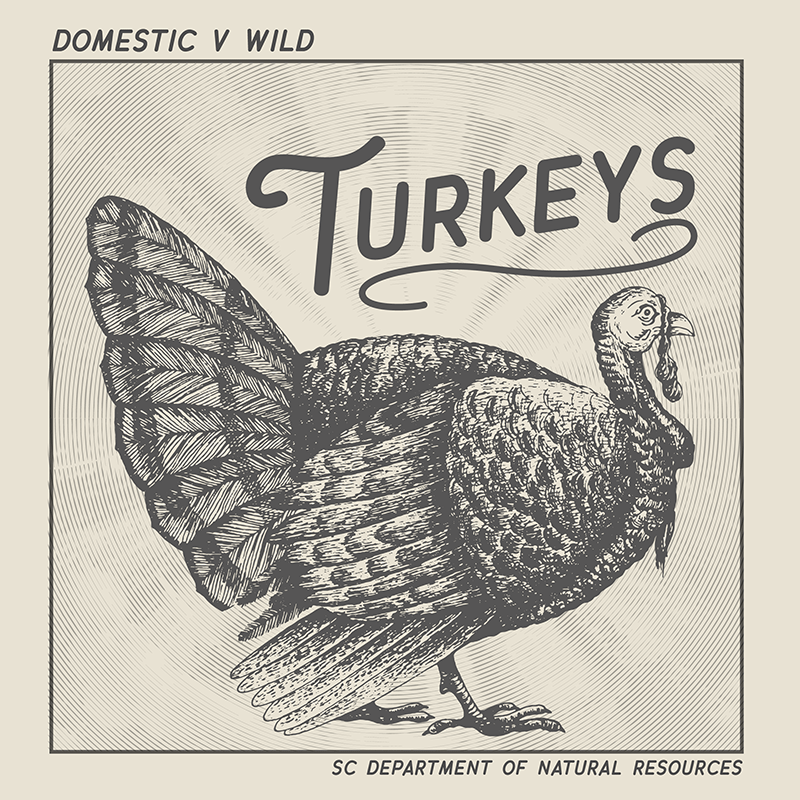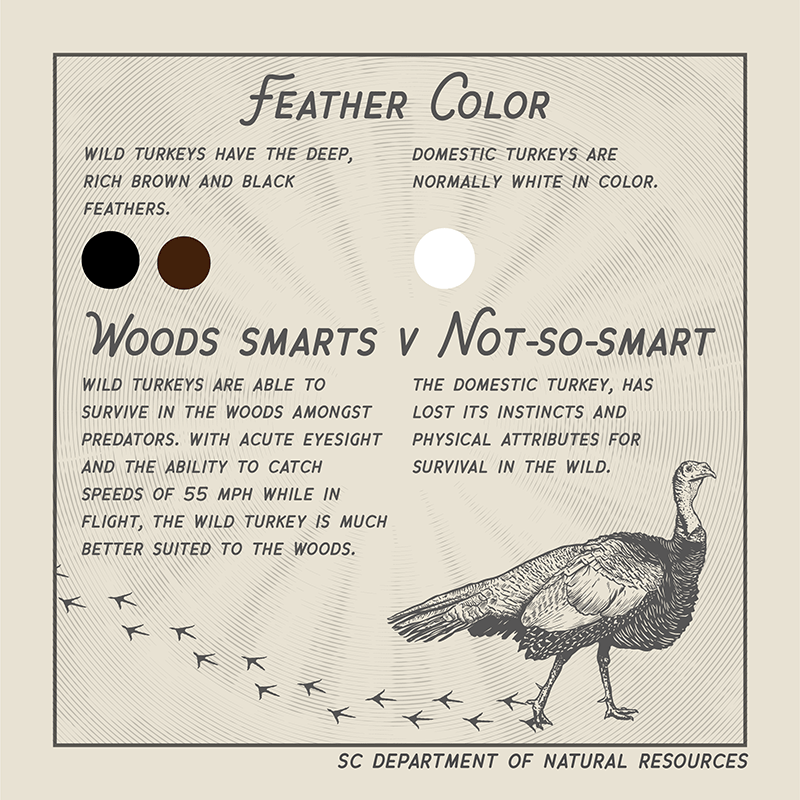There are many who think about the crisp, spring air that surrounds the beginning of a good turkey hunting season. But perhaps, for a much larger population of people, when one thinks of a turkey, they think about being surrounded by their loved ones and are reminded of all the things they are thankful for.
Not only are we talking about two completely different seasons, but we are also talking about two completely different birds.
While bearing the same species name, Domestic and Wild Turkeys share little else in common.
In preparation for this Thanksgiving season, here are some things you probably didn't know about turkeys.

Domestic and Wild Turkeys have different feather colors.
The easiest distinction between a wild turkey or a domestic turkey is simply what color its feathers are. Wild Turkeys have the deep, rich brown and black feathers that most people associate with turkeys. In completely opposite fashion, domestic turkeys are normally white in color, an intentional product of domestication because white pin feathers are less noticeable on the carcass.
"Wood Smarts" vs. "Not-so-smart"
Wild turkeys are able to survive in the woods amongst predators a many. With acute eyesight, the ability to catch speeds of 55 mph while in flight, the wild turkey is much better suited to the woods than its cousin, the domestic turkey, who has lost its instincts and physical attributes for survival in the wild.

Turkeys have been domesticated for centuries
Turkey relics dating as far back as 25 A.D. suggest that Native Americans domesticated turkeys before Europeans ever set foot on the continent and that turkey-raising may well be one of the oldest forms of organized meat production in the Northern Hemisphere.
Spanish explorers took Mexican wild turkeys domesticated by the Aztecs home to Europe in about 1519 where they spread rapidly through Europe and were introduced in England between 1524 and 1541 and became highly sought after for gourmet dinners.
After the domestic turkey spread across Europe in the 1500s, the colonists who settled the New World brought these tasty birds with them across the Atlantic back to the land of their origin.
Restoration of Wild Turkey populations is one of South Carolina's conservation successes
Restoration of the wild turkey in South Carolina is one of the Palmetto State's most noteworthy conservation success stories. Limited by the early 1900s to small pockets of birds in the Lowcountry's Francis Marion National Forest and along the Savannah River swamps, the wild turkey is now widespread throughout South Carolina and a spring hunting season is held in all of the state's 46 counties (there is no fall season). Wild turkey restoration was made possible through the efforts of the SCDNR, the National Wild Turkey Federation, the forest products industry, private landowners, and South Carolina sportsmen and sportswomen.
It's illegal to release pen-raised turkeys
State law prohibits the release of pen-raised turkeys due to the possibility of introducing disease and the danger of contaminating the wild turkey gene pool. But going back to the lack of "wood smarts" of their wild cousins, domestic turkeys generally fall prey to a host of hungry predators such as bobcats, foxes or coyotes before getting a chance to breed with native birds.
Regardless of which you think of when you hear the word "turkey," we hope you have a healthy and happy Thanksgiving this year!



